Commentary 06 Apr 2013 04:25 am
Brewsing
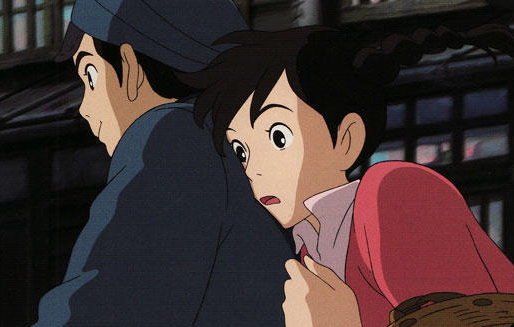 My thoughts keep going back to From Up on Poppy Hill. I really would have liked giving the film a more positive review, and I feel as though I should go back and see the film again. Maybe I didn’t give it enough of a chance; however, I can’t think of any dynamic scene in the movie that is enticing me back.
My thoughts keep going back to From Up on Poppy Hill. I really would have liked giving the film a more positive review, and I feel as though I should go back and see the film again. Maybe I didn’t give it enough of a chance; however, I can’t think of any dynamic scene in the movie that is enticing me back.
The entire film is professionally and finely planned and layed-out as would be expected from a Ghibli work. The drawing is excellent, and the backgrounds are quite fine and strongly detailed. But there just isn’t anything that soars.
I think of Ponyo riding those waves of the Tsunami. My heart – my entire body lifted in exuberance with that scene. No matter how many times I’ve seen the film it always does it.
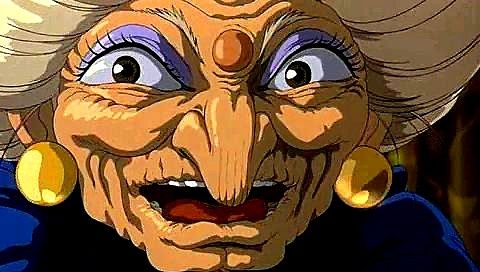 I think of Spirited Away (so many moments) where Chihiro rides on that ghost train with “No Name” to the dark foreign and silent land of Yubaba, Zeniba’s twin sister. I think of Princess Mononoke when the god of the forest, dressed like a deer stands watching him from across the lake. It’s so glorious a moment. Or one of my all time favorite moments in the movies – standing at the bus stop with Totoro in the rain waiting for the bus to arrive. It doesn’t get better than that in film.
I think of Spirited Away (so many moments) where Chihiro rides on that ghost train with “No Name” to the dark foreign and silent land of Yubaba, Zeniba’s twin sister. I think of Princess Mononoke when the god of the forest, dressed like a deer stands watching him from across the lake. It’s so glorious a moment. Or one of my all time favorite moments in the movies – standing at the bus stop with Totoro in the rain waiting for the bus to arrive. It doesn’t get better than that in film.
There are so many other Ghibli moments for me, I could keep going. Yet not even a hint of any of these in Poppy Hill. Maybe that’s why I felt I was so negative. I wanted something I shouldn’t have expected from a sophomore director without the proper experience to play out that very complex relationship between him and the girl. It becomes cliché when it should have torn at our hearts.
Who knows. Maybe I’ll go back and see the version of the film in Japanese rather than the English dubbed. Interesting that I have no intentions or plans to see The Croods again. Maybe when the Japanese dubbed version comes out so that I won’t have to hear those Nick Cage Valley Girl accents again.
ITVS Cut Out IDs
The Soup Factory in the UK, the studio owned and supervised by Andy Soup, is rightly taking pride in some IDs they did for ITVS. These pieces are animated cut-outs, models that were designed for 3D table top animation. They are beautiful pieces, and I thought it a good idea to link to them so that you can take them in as well. After all, we in the US don’t get to see the advertisements done for ITVS.
For the 6 IDs, Espen Haslene directed the films. He is the leader of a studio known as Tundra, a partnership of Scandinavian/French/Italian/English filmmakers, animators, graphic and web designers. Tundra worked together with Martin M. Andersen, head of Andersen M. Studio, acting as the stop-motion Animation Director. There’s obviously some computer animation mixed with the stop motion work, and you’ll find a complete list of credits when you go to the Soup Factory‘s page for the films to view the IDs.
Take a look here.
I’ve been going through Frank Thomas and Ollie Johnston‘s first book, Disney Animation: The Illusion of Life. I have to admit that I haven’t been much of a supporter of the book. I remember first getting it and not reading it. I just went through the pictures. Then I read all the captions under the photo/artwork/images. That’s about as far as I got with the book. I don’t really know why; I just wasn’t inclined to really dig my teeth into it, and I never read it. Bt then I’ve often had that problem with large picture books, especially if they’re supposed to be teaching something. The book seems confused. It doesn’t know if it wants to be a glossy art book that teaches you something.
I guess I’ll make up for some lost time and will read it now. But I think in doing it, I’ll take my time with it and will write about it in some detail, trying to get my thoughts out on paper (or on blog). I know that it’s the first of the animation books I can remember where they had some pure gold for illustrations, and they printed it too small to be able to properly get it. The good part about the images on the web is that you can blow them up pretty easily. And I’m going to.
Perhaps I’m inspired by Mike Barrier‘s negative comments about it. His writing, for me, is pretty funny, too. Take a look at this review of Dick Williams‘ book where he necessarily goes to the Thomas-Johnston book.
Time to read it for myself and see what they’re actually saying. I have read others of their books and haven’t been inspired.
Book Reports
 I’ve been reading lately a different sort of book. it’s certainly not a quick read getting through Donald Crafton‘s most recent book, Shadow of a Mouse. I’ve been a fan of Donald Crafton’s work since his first book, Before Mickey: The Animated Film, 1898-1928. It was a study of a little-known part of animation history, and he explored and revealed the difficult period. Certainly, this was a fine feat of research combined with his excellent writing.
I’ve been reading lately a different sort of book. it’s certainly not a quick read getting through Donald Crafton‘s most recent book, Shadow of a Mouse. I’ve been a fan of Donald Crafton’s work since his first book, Before Mickey: The Animated Film, 1898-1928. It was a study of a little-known part of animation history, and he explored and revealed the difficult period. Certainly, this was a fine feat of research combined with his excellent writing.
Shadow of a Mouse is something else again; it’s a book that employs the author’s extensive knowledge of film history to help consider a number of complex theoretical problems relating to animation, which he poses. The book carefully rethinks animation and all of its properties. Blending 2D, stop-motion, cgi, and more experimental forms, the book challenges the way we think of animated film. It’s a tough and complex read though I’m certainly enjoying it.
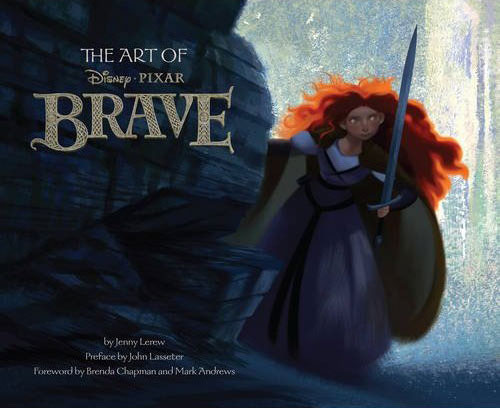 I’ve also been reading Jenny Lerew‘s The Art of Brave. I received apologies from Chronicle books when they’d first published the companion to Pixar’s Brave. They’d gone through their print run quickly and weren’t able to send me a copy. I made myself something of a pest after that and pursued them for a reviewer’s copy. Ultimately, I got my hands on one and am quite enjoying it. The book is something more of a picture-book (and what great pictures), though I am enjoying Jenny’s writing. I hope, also to finish this pretty soon and will write about it – especially now that the film won the Oscar and is available in DVD.
I’ve also been reading Jenny Lerew‘s The Art of Brave. I received apologies from Chronicle books when they’d first published the companion to Pixar’s Brave. They’d gone through their print run quickly and weren’t able to send me a copy. I made myself something of a pest after that and pursued them for a reviewer’s copy. Ultimately, I got my hands on one and am quite enjoying it. The book is something more of a picture-book (and what great pictures), though I am enjoying Jenny’s writing. I hope, also to finish this pretty soon and will write about it – especially now that the film won the Oscar and is available in DVD.
Shadows
Sometimes you have to take the bull by the horns and do something that nobody wants. During the making of Raggedy Ann & Andy I was supervising the Assistant Animators and Inbetweeners for the course of the production. I was made to jump from being an Inbetweener, myself, to suddenly being someone supervising lots of people (it went up to 150 people at one point toward the end of production) and overseeing their work.
In the middle of all this, there was Art Babbitt‘s sequence. I was the one receiving the work in New York when the shipments arrived. But then, that was just the beautifully animated camel and the two rag dolls that looked like the work of no one else. They were wildly off model – Ann & Andy, our two leads. I was told to leave them as is, by Dick. But I did some slight adjusting trying to get them a little looser to match all the other animation in the film. I wasn’t very successful at that. I couldn’t kill the work of Art or his assistant, David Block. Art’s work looked like it was chiseled into the paper, the line was so tight. His arm – and especially David Block’s – had to hurt after drawing that rigidly.
Then we added stars. It was a simple film effect, but there were a lot of problems getting there. Al Schirano, the supervising cameraman, and Al Rezek, who assisted him on this effect, knew what they were doing, but their work was anything but calibrated and planned. I saw a hole and pushed myself into it to make sure that the star fields in the scene worked with the backgrounds and didn’t interfere with the characters’ movement. They were working well after a hard start and Al Schirano was appreciative of my getting Dick off his back.
Finally, there were those damned shadows. They had to be added and animated to make the scenes work. I got that job, and it had to be done within a week. At first I mirrored Art’s animation but it looked horrible. Try after try after try, it all looked like mud. So without telling anyone, I started snapping the shadows. The legs moved very slow and tight, like all the rest of Art’s animation, but the shadows snapped into position. Every time the legs went up or down, it happened in one or two frames. It worked like a gem and no one commented. I expected to hear from Dick, but nothing. At one point he might’ve said, “good job,” or some such thing, but there were no attacks from either him or Art about that violent movement in Art’s sequence. You never know. Sometimes troubles aren’t as bad as you think.
Every scene of this sequence wass shot numerous times. The shadows were painted black, and the entire scene would be shot at 65% exposure. Then it’d be rolled back to “0″ and shot at 35% exposure without the shadows. That meant that the shadows would be transparent – 65%. Then the film would again be rolled back to “0″ and the star field and the animation of the bottom-lit lights would be shot using a star filter. That was done in three passes so that the stars would have different levels of brightness. (I learned all these tricks back at the Hubley studio and was able to suggest things to the Al Schirano who rode with me (and took credit when it worked.)
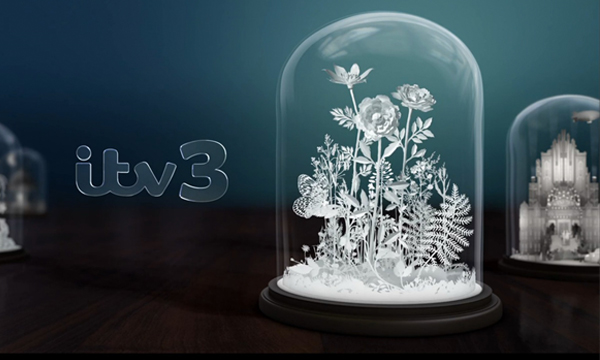
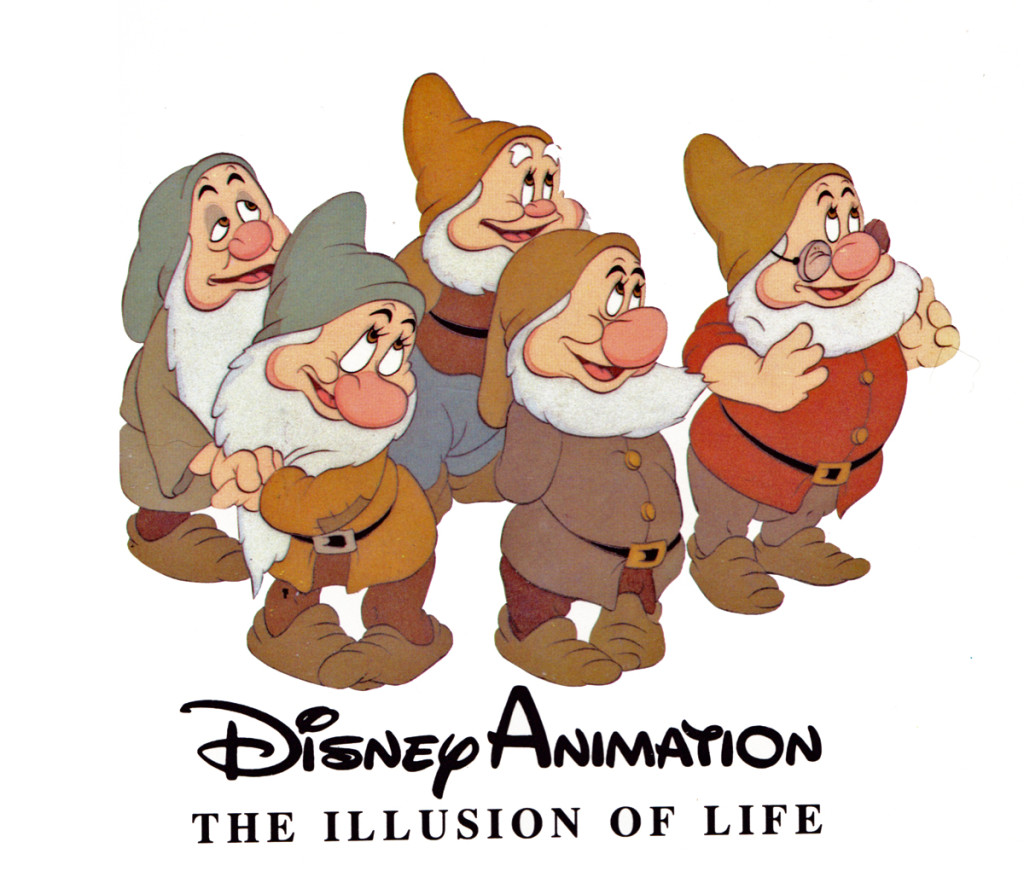

on 06 Apr 2013 at 8:36 am 1.Bill Benzon said …
A four-part interview with Grafton on Shadow:
http://henryjenkins.org/2013/02/before-and-after-mickey-an-interview-with-donald-crafton-part-one.html
http://henryjenkins.org/2013/02/before-and-after-mickey-an-interview-with-donald-crafton-part-two.html
http://henryjenkins.org/2013/02/before-and-after-mickey-an-interview-with-donald-crafton-part-three.html
http://henryjenkins.org/2013/02/before-and-after-mickey-an-interview-with-donald-crafton-part-four.html
on 06 Apr 2013 at 9:58 am 2.Mark Mayerson said …
Is it possible, Michael, that you are reacting coolly to From Up on Poppy Hill because it contains no fantasy? The Ghibli moments you mention as memorable are not ones that would occur in a realistic story.
I quite enjoyed Poppy Hill and I found the interplay of past, present and future in it to be thought provoking. The events of the wars took place when the main characters were babies, and yet they cast a shadow on everyone in the film. The main characters were left with mysteries about their parents, and their schoolmates were wrestling with how much of the past to preserve while embracing future promise.
Have you seen Whisper of the Heart? It is similar in many ways to Poppy Hill and I wonder what your impression of it is. While it contains some fantasy, those moments are clearly part of a work of fiction within the film.
on 06 Apr 2013 at 11:53 am 3.Nat said …
I don’t know if that’s the reason, Mark. I personally love Whisper of the Heart and even more so, Takahada’s Only Yesterday (which still needs a US release). Up on Poppy Hill certainly isn’t a bad film and I enjoyed it too. However, it does seem to lack the timing and depth of Miyazaki Senior’s and Takahada’s films. Goro is a young director. Up on Poppy Hill is only his second movie and it’s a vast improvement over Tales from Earthsea. If we give Goro time, I’m sure his movies will continue to improve. Will they ever be as good as his father’s? Who knows? But we must also remember that Goro is not his father and makes films his own way.
on 06 Apr 2013 at 12:48 pm 4.Rudy Agresta said …
Hi Michael. I eagerly awaited John Canemaker’s book on the making of Raggedy Ann and Andy – I must have read the thing at least a dozen times. I have always enjoyed your insight into the production, and naturally, you were there which makes it much more real. How about you putting together a book on the making of the film? From your perspective. I would prize that one as much as John’s! Just a thought my friend.
on 06 Apr 2013 at 1:06 pm 5.Michael said …
My inclination is to agree with Nat re Poppy Hill. It felt like there were some wonderful subtleties in the story that just weren’t well directed, and the heart of many scenes was missed. That coupled with the fact that the film was professionally animated, but there weren’t any really fine bits of character animation like many I saw in Arietty. In the end, the film felt just ordinary; nothing stood out.
As for the quieter scenes, I’ve always preferred those than the more active scenes. My favorite scene in Arietty was one in which the older woman (Carol Burnett’s character) telephoned for help. There was some real and strong acting in the scene and made appreciate the film more than others.
However, I’m pretty much convinced that I should go back and see it again. I’ll try this week before it stops playing at the IFC theater.
on 06 Apr 2013 at 1:11 pm 6.Michael said …
Rudy, I have no intentions of writing a book on Raggedy Ann. However, I do think I have a lot of anecdotes that might be worth sharing. I’m going to try to pour out more of those on these Saturday posts. Writing about the star scene, this morning, I realized that it really can offer something about animation. The trick of snapping the shadows actually helped Babbitt’s scenes. He did a great job with the camel, but his Ann & Andy were pathetic and pulled the entire sequence down. For these scenes, at least, the shadows and stars did add some magic.
on 06 Apr 2013 at 3:57 pm 7.Daniel Thomas MacInnes said …
I completely understand and agree with your sentiments. My first viewing at the Uptown Theater was a frustrating disappointment. Perhaps I just wasn’t in the best mood, and like you, I feel a great desire to WANT to like this movie. Goro Miyazaki, after all, is the presumptive heir apparent to the studio. He’s being groomed to inherit the family business from his father, and despite his lack of experience, they’re working their hardest to help him grow into the director’s role.
But it always comes back to that simple fact – Goro Miyazaki has no experience as a filmmaker, a storyteller, or an animator. I will gladly agree that Poppy Hill is much better than Earthsea (a very low standard indeed), but the movie was still lacking passion, lacking vision. It was a dutiful son punching in his time card and doing a very respectable, if uninspiring, job.
I have a copy of the Japanese Blu-Ray, but I still haven’t summoned the energy to watch again. I feel as though I’m making excuses, trying to find a reason to like this movie and give it a favorable review. Sigh, it’s like I’m writing for GamePro Magazine all over again.
It’s interesting to note that Ghibli’s best animators (including the great director Yoshiyuki Momose, the true heir apparent) were working on the animated “film” for Ni no Kuni, the Playstation 3 video game. I’d like to see those animated scenes compiled and shared online, if only to compare to Poppy Hill’s presentation.
I do think this movie is very Japanese, and much of the nostalgia and reflections on their post-war generation won’t speak to us. This was Hayao Miyazaki’s key change from the original source material (a 1980 girls’ romance comic), and it’s one of the great themes of his career. Younger Goro doesn’t have that life experience, and so we don’t get those key insights, those little details, that we cherish so much in Miyazaki’s and Takahata’s films. Compare Poppy Hill to Mimi/Whisper and Omohide Poro Poro, and you’ll see that difference all too clearly.
I have no idea if Goro has greatness within him; I’m not even sure he wants the job. He’s fulfilling the role of the dutiful son, hoping this will bring him closer to his estranged father, or at least understand the man. But he doesn’t have any of his father’s passions or obsessions. Father Miyazaki was traumatized by war, raised among the ruins of a destroyed nation, and dreamed of drawing comic books and flying. What makes Goro-san tick? He appears to be highly intelligent, very thoughtful, a peaceful man who would rather cultivate gardens or design architecture. I don’t know how he turns those passions into storytelling. And I don’t think he knows, either.
Anyway, I’m sorry for rambling and taking up so much space. But I’m still shook up over Roger Ebert’s passing, and it’s good to talk about the movies with folks who understand.
on 07 Apr 2013 at 1:07 am 8.David Kilmer said …
Do you remember back in 1999 a site called Animation-Books, run by Tom Klein, did a “best animation books” e-mail poll? Illusion of Life topped the poll.
The site no longer exists, but the list, which puts Hollywood Cartoons at #3, is still available at AWN:
http://www.awn.com/news/books/disneys-illusion-life-tops-best-animation-books-poll
on 07 Apr 2013 at 5:00 am 9.Michael said …
Yes, David, I remember the site well. I used to go there at least once a week but then it just sat there for a while. Like too many good blogs it disappeared.
on 07 Apr 2013 at 7:03 pm 10.Stephen Worth said …
Illusion of Life is a history book, not a how to book. Too Funny For Words was an even more useful book in my opinion. It outlined how Disney wrote its stories using pictures, not words.
on 07 Apr 2013 at 10:49 pm 11.Michael said …
Having just read half the book, Stephen, you’ve obviously forgotten the book. Though it obviously builds itself arond the history of the Disney studio, it’s most definitely a how to book. In what history book have ou gotten the definition of squash and stretch, overlapng action and secondary action? It’s obvious that Thomas and Johnston wanted to tell HOW their animation is done.
on 08 Apr 2013 at 2:24 pm 12.Charles Kenny said …
TV channel idents have a long and fascinating history of being animated. While the whole ident tradition has sadly [mostly] died out here in the States, it’s nice to know it continues in Europe.